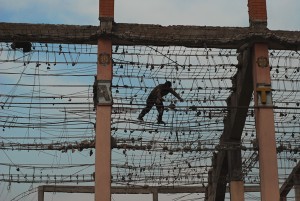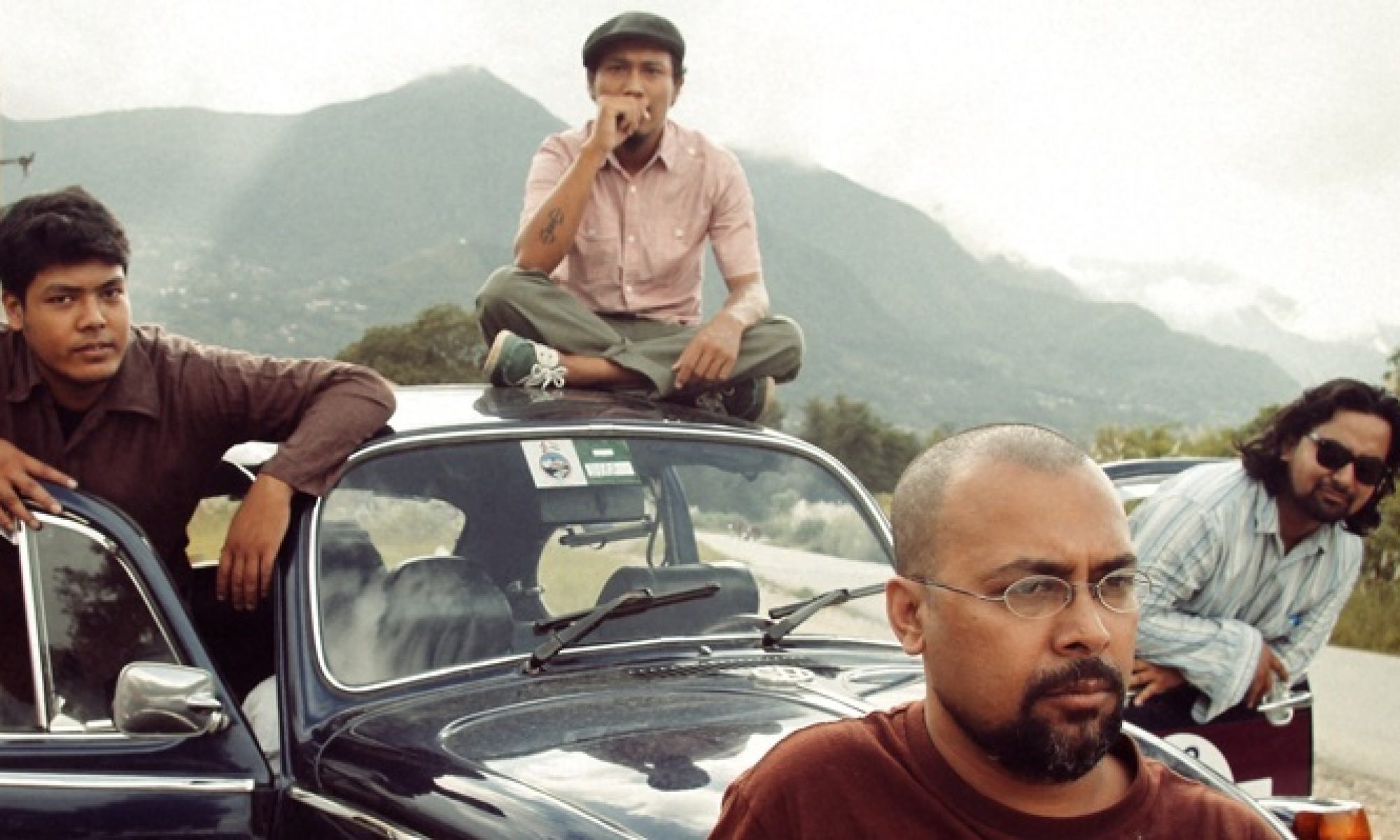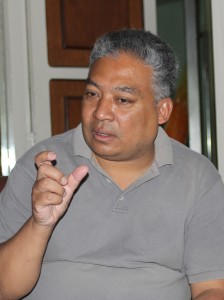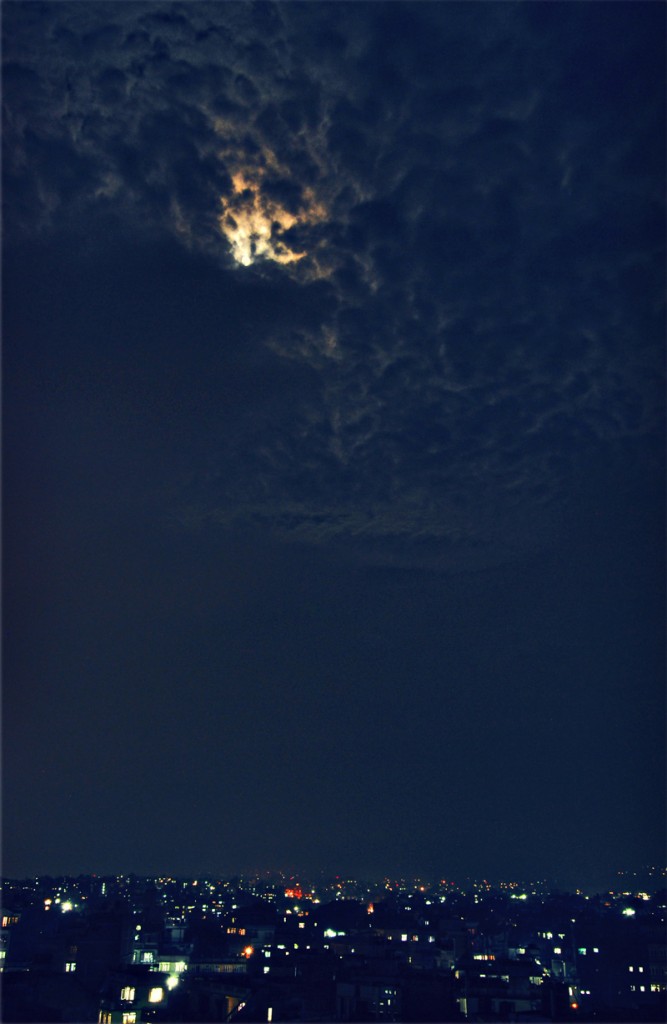 We all wonder about the future of our countries, if they will prosper or fail, succeed or not, especially now, when we hear reports of political upheaval, natural disasters, and crumbling economies. I am pretty new to Nepal. I have only lived here for a total of about eight months, but I too wonder about its future, how it will be successful and sustainable, maintain peace and economic prosperity. One of the things that many Nepalis worry about, especially in the wake of October’s earthquake, is infrastructure. In rural areas, in particular, much of the infrastructure present in Kathmandu, like good schools and effective hospitals, just does not exist. However, Kathmandu also struggles to maintain its infrastructure and faces certain challenges unique to urban areas. As a foreigner, I came to Nepal with little knowledge of the infrastructure here. However, while living in Kathmandu and travelling around the country I have learned a lot more about the matter partly through dealing with the consequences of lagging infrastructure first hand.
We all wonder about the future of our countries, if they will prosper or fail, succeed or not, especially now, when we hear reports of political upheaval, natural disasters, and crumbling economies. I am pretty new to Nepal. I have only lived here for a total of about eight months, but I too wonder about its future, how it will be successful and sustainable, maintain peace and economic prosperity. One of the things that many Nepalis worry about, especially in the wake of October’s earthquake, is infrastructure. In rural areas, in particular, much of the infrastructure present in Kathmandu, like good schools and effective hospitals, just does not exist. However, Kathmandu also struggles to maintain its infrastructure and faces certain challenges unique to urban areas. As a foreigner, I came to Nepal with little knowledge of the infrastructure here. However, while living in Kathmandu and travelling around the country I have learned a lot more about the matter partly through dealing with the consequences of lagging infrastructure first hand.
Over the Nepali festival of Tihar, I went on a trip to Butwal, Palpa, and Lumbini with my family. All of these places are pretty highly populated, easy to reach by car, and Lumbini, in particular, is often frequented by tourists. However, even there, much of the infrastructure apparent and present in Kathmandu is missing. Butwal was a bustling city, a crossroads for business, and only about six hours from Kathmandu. That is why when we had to make a trip to the emergency room, I was shocked by its crumbing walls and crowded rooms.
While my husband and I were traveling to Butwal, we stopped for lunch at a road-side restaurant. The food was tasty, and we had eaten there before with no problems. However, on our second day in Butwal, my husband fell sick with a stomach bug, most likely from our meal on the road. We tried to treat his symptoms with Digene to calm his stomach and Cetamol for the pain, but he just was not feeling any better. On Tuesday night at about 10pm, my father-in-law decided we needed to go to the emergency room. I was expecting something like the major hospitals in Kathmandu, with clean enough rooms, ample hospital beds, or at least a place to sit down, but I was in for a shock. Even though Butwal is a busy, highly populated city, their emergency room was very minimal. When we walked in, I immediately noticed the crumbling, dirty walls whose corners were filled with cobwebs. Patients were lying on the floors in the crowded waiting room. Inside the main treatment room, even though hospital beds lined the walls, there was no room for my husband. After standing around for a bit, the nurse suggested he double up with another patient in one of the thin beds. Family members of the sick also had little room to wait. One family of four had gathered on their relative’s hospital bed to eat dinner. Although the doctors and nurses were obviously overwhelmed with the load of patients, we were lucky to be seen quickly. After describing his symptoms, my husband was immediately diagnosed with food poisoning, given a shot of pain killer, and sent home. I have often dreamt about living outside of Kathmandu’s hustle and bustle, crowded streets, and pollution. However, poor infrastructure keeps us from moving into a cleaner city. The health care in Kathmandu is simply the best in Nepal, and that is one of the primary reasons we choose to stay here.
online casino best
 Besides hospitals, schools are another piece of infrastructure that are lacking in many areas outside of Kathmandu. When I lived in Nepal as a study abroad student, I went on a trip with my program to Bandipur, a beautiful hill town on the way to Pokhara. It is known for its private school, Japanese Notre Dame School, founded and run by Japanese nuns. This school is one of the few outside of Kathmandu that sends its students to colleges and universities abroad. Although I knew that schools like this one are few and far between, I did not realize just how poorly funded and inaccessible schools in more remote and rural areas can be. A few months after traveling to Bandipur, my program went to a much more rural village called Simigaau in the Dolakha District of Nepal. It takes about two days to reach Simigaau, one day by bus and one by foot. The village there has a very minimal school up to grade 5. Although the students living in Simigaau can only attend elementary school, they are lucky to have a school so close. Some of the students who live outside of the village walk up to two hours to class in the morning because their own villages do not have schools. If students in Simigaau and the surrounding areas want to continue on into middle and high school, they have to trek for several hours on Sundays to reach the closest one. During the week, they live and cook on their own at the school location and travel back home on Saturdays. Simigaau is not nearly as remote as some other areas of Nepal. They receive some aid from non-governmental organizations and they get a number of trekkers traveling to the lake Cho Rolpa and study abroad students like me. All of these sources bring in some form of money or assistance to the area. People living in more remote villages that receive less assistance must face worse infrastructure and weaker schools.
Besides hospitals, schools are another piece of infrastructure that are lacking in many areas outside of Kathmandu. When I lived in Nepal as a study abroad student, I went on a trip with my program to Bandipur, a beautiful hill town on the way to Pokhara. It is known for its private school, Japanese Notre Dame School, founded and run by Japanese nuns. This school is one of the few outside of Kathmandu that sends its students to colleges and universities abroad. Although I knew that schools like this one are few and far between, I did not realize just how poorly funded and inaccessible schools in more remote and rural areas can be. A few months after traveling to Bandipur, my program went to a much more rural village called Simigaau in the Dolakha District of Nepal. It takes about two days to reach Simigaau, one day by bus and one by foot. The village there has a very minimal school up to grade 5. Although the students living in Simigaau can only attend elementary school, they are lucky to have a school so close. Some of the students who live outside of the village walk up to two hours to class in the morning because their own villages do not have schools. If students in Simigaau and the surrounding areas want to continue on into middle and high school, they have to trek for several hours on Sundays to reach the closest one. During the week, they live and cook on their own at the school location and travel back home on Saturdays. Simigaau is not nearly as remote as some other areas of Nepal. They receive some aid from non-governmental organizations and they get a number of trekkers traveling to the lake Cho Rolpa and study abroad students like me. All of these sources bring in some form of money or assistance to the area. People living in more remote villages that receive less assistance must face worse infrastructure and weaker schools.
Schools in Kathmandu are ubiquitous, easier to get to, and many consider them to be better. While in Butwal last week, I talked with one of the 16-year-old grand daughters of our hosts. She was home for Tihar but usually lives in Kathmandu. Although she studied up to middle school in Butwal, she now attends a high school in Kathmandu because her parents felt the one in Butwal was not good enough. Sending children to boarding school in search of a better education is common among Nepali families who can afford it. A number of the students studying in Kathmandu come from outside of the valley because the schools in their home towns are not as good. One of the best schools in Kathmandu, Budhanilkantha, is a boarding school that reserves half of its spots for students from outside of the valley.
Although Kathmandu has many more facilities than other areas of Nepal, it too struggles with infrastructure. Anyone who has visited knows the roads have a plethora of potholes that are never fixed. Those who have visited or lived here in the winter know that 16 hours of load-shedding is not uncommon. Because the city has become so crowded, and because the government cannot provide the time and money to replace some of the lagging infrastructure, things in Kathmandu are sometimes worse than in other places, and the consequences of lagging infrastructure are higher. Last month, we had one of the biggest earthquakes in Kathmandu in decades. I was born and raised in the Northeastern United States, an area that just recently saw its first earthquake in my lifetime. Although my husband, a Kathmandu native, grew up with them, this earthquake in October was quite a shock for me. After the quake, everyone started talking about the bad infrastructure in the valley. The houses are close together and made of bricks and cement, heavy materials that could kill many if a more serious earthquake hits. Earthquakes can have terribly damaging effects on rural areas, but in highly populated, densely packed places like Kathmandu, an equivalent earthquake produces much greater damage.
Infrastructure allows a city to run smoothly. Reliable sources of electricity and usable roads make it possible for businesses to open and operate and for people to commute to work. Certain infrastructure like schools and hospitals ensure the long-term sustainability of a community. Having good schools produces students who can go on to join the workforce, and having good hospitals keeps a city’s citizens healthy and able to go about their daily lives. Not only does reliable infrastructure make it possible for things to run smoothly, it also attracts those with money. This brings in more resources that can further be funneled into schools and hospitals and into improving the roads, electricity sources, and other infrastructure. However, it is important to note that more infrastructure is not always necessary. In villages where subsistence farming is the common profession, people do not necessarily need roads for their communities to run smoothly and sustainably. There are some aspects of infrastructure that can benefit everyone, like water pumps with clean water or hospitals, but not every community needs the infrastructure that cities require to be successful.
Kathmandu struggles with certain aspects of lacking infrastructure, like poor roads, and load-shedding partly because of its high population. The increased use brought on by so many people wears on the resources. Other areas, because they do not struggle with high population, do not face the same challenges that Kathmandu does. Some communities are also actively working to improve their infrastructure, sometimes with the help of outsiders. The Japanese Notre Dame school in Bandipur is a prime example. Although the nuns started it, it could not run without the help and support of the Bandipur community. Another example comes from Simigaau. People there have also striven to bring better infrastructure to their community. They have their own hydro-electric generator, and many families there have running water, a luxury that some households in Kathmandu do not have. They use the slope of the hills they are living on to bring running water to their houses. As infrastructure outside of the valley gets better, there will be fewer people coming to Kathmandu in search of better resources. This will reduce the strain on infrastructure here. Maybe one of the best ways to improve infrastructure in Kathmandu is to start by improving it elsewhere.
It is unquestionable that those living in areas outside of Kathmandu, especially rural areas, have less access to some very important infrastructure, including good hospitals and schools. However, Kathmandu lacks in certain areas of infrastructure as well, including safe roads and reliable sources of electricity. What is the future of infrastructure in Nepal? There are plenty of NGO and INGO’s fighting to building better water resources, electricity sources, schools, hospitals. Some of the change is fueled by foreigner inpiduals like Maggie Doyne who founded the Kopila Valley Children’s Home and School. Other change has come about through larger organizations like USAID and Habitat for Humanity. However, infrastructure does not always improve through inpiduals and organizations with a social service bent. Many Nepalis have improved their own access to electricity through the installation of solar panels in their homes, and some Nepali businesses are building hydo-electric generators to produce electricity that they will sell to the government. Lack of infrastructure often affects the poorest people, who cannot afford to send their children to better schools, travel to Kathmandu for health care, or put solar panels on their houses, but I feel that change is coming. Nepalis and foreigners have both started to enact change that will lead to better infrastructure.



